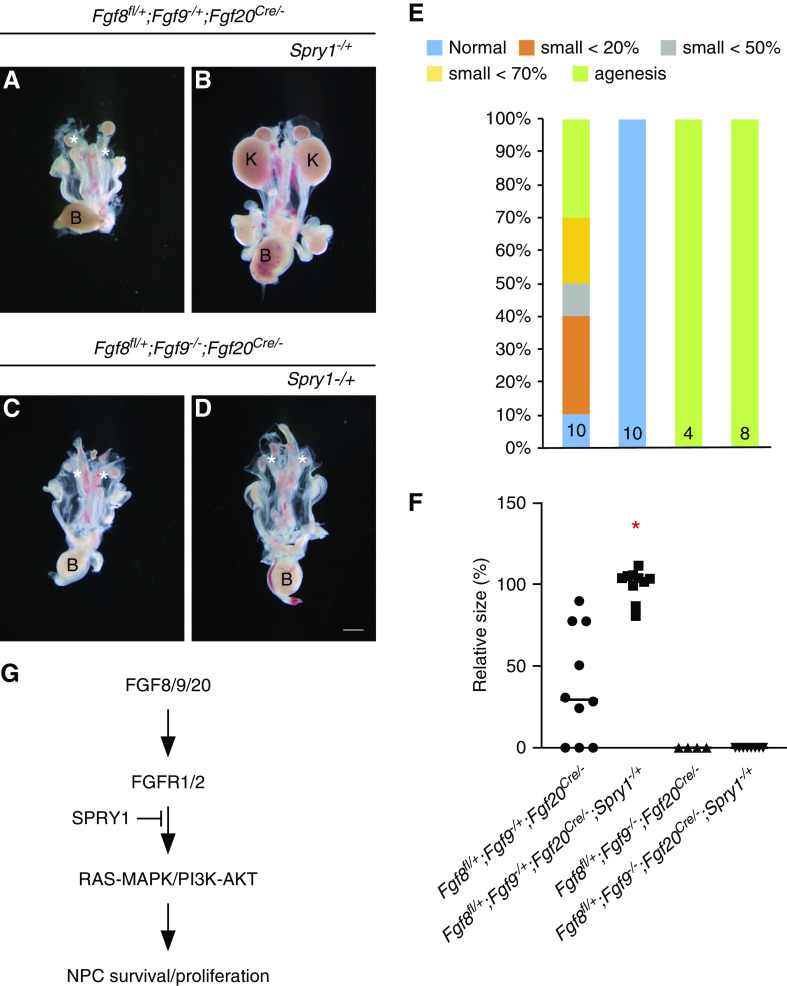Figure 7.
Antagonism of Spry1 depends on dosage of FGF ligands. (A–D) Morphology of urogenital system in E18.5 Fgf8, Fgf9, Fgf20, and Spry1 compound mutants showing that (B) deleting one copy of Spry1 rescues kidney agenesis in (A) Fgf8fl/+;Fgf9−/+;Fgf20Cre/− but (C and D) not in Fgf8fl/+;Fgf9−/−;Fgf20Cre/−. * in (A), (C), and (D) indicate loss of kidneys. (E) Percentage of kidney phenotypes and (F) relative kidney size of Fgf8, Fgf9, Fgf20, and Spry1 compound mutants, showing that deleting one copy of Spry1 increased kidney size in Fgf8fl/+;Fgf9−/+;Fgf20Cre/− but not in Fgf8fl/+;Fgf9−/−;Fgf20Cre/−. *P<0.01. (G) Model of FGFs and SPRY1 during NPC maintenance. FGF8/9/20 activated FGFR1/2 to promote survival and proliferation of early nephron progenitors putatively through RAS-MAPK/PI3K-AKT. SPRY1 fine-tunes this process by antagonizing FGFR activity. Scale bar, 100 µm. K, kidney; B, bladder.

